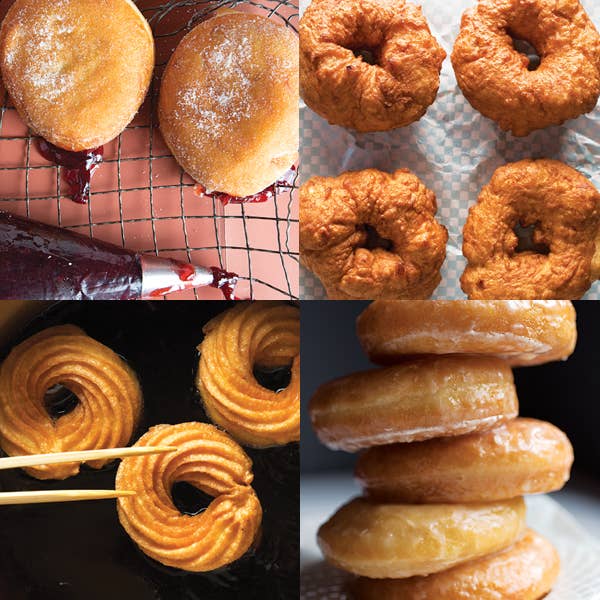
Deciphering the Donut
When you walk into your average American donut shop, chances are you'll find a few key varieties of donut, and each has its own delectable appeal. There are yeast, or raised, donuts—think classic Krispy Kremes or pillowy jelly-filled. Made from yeast-leavened dough that rises twice before it's fried—once after it's mixed, then again after it's shaped—the resulting donut is light and fluffy enough to melt in your mouth. Then there are cake donuts, the sturdiest of the bunch; prime examples are dense chocolate donuts or substantial old-fashioneds. Made with a chemical leavener, such as baking powder, the dough doesn't need time to rise and can be fried immediately. These are the dunkers of the donut world, the ones with heft, a satisfying crust, and a moist interior. Unlike yeast donuts, they're still pretty good on day two…assuming you have the willpower to keep them around. The cruller, meanwhile, is made from eggy choux pastry, the same type used for eclairs and which is more like a batter than a dough. These extruded donuts are piped into twist or ring shapes before they're dunked into hot oil. Crisp on the outside, custardy within, and usually coated with a simple sugar glaze, the cruller is the donut at its most elegant. The most recent addition to the donut canon is the baked donut, a cupcake-like rendition of its fried cousin. Part of the allure of these moist-crumbed treats is how easy they are to make at home. Forged in the oven in muffin or ring-shaped tins, they pose no risk of spattering oil, yet the results can be pretty convincing.
Keep Reading
Continue to Next Story










